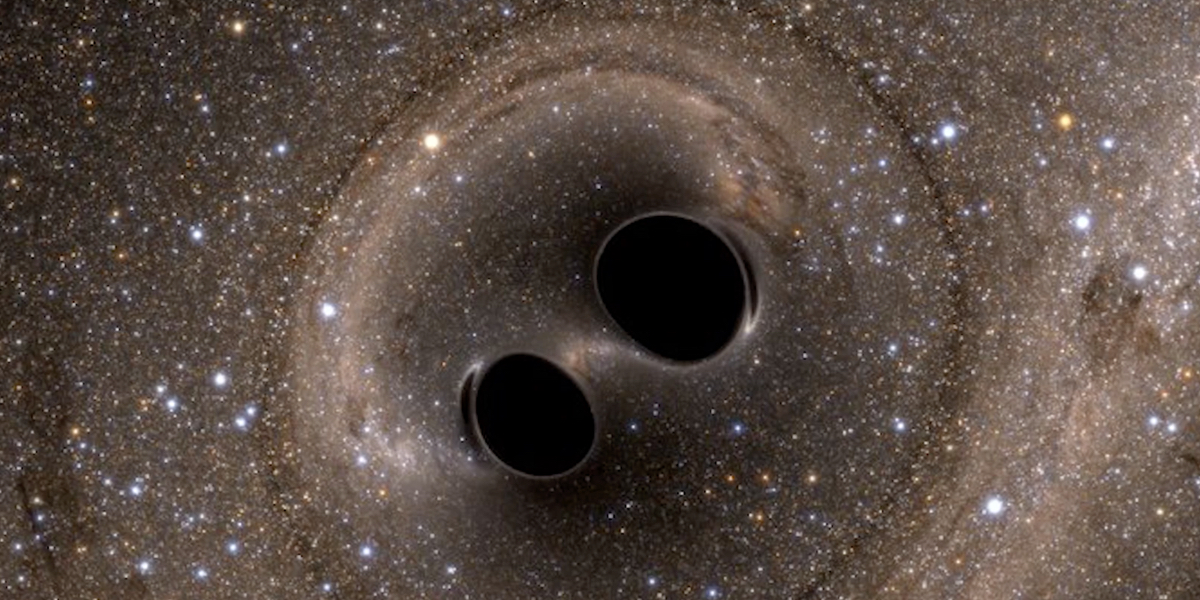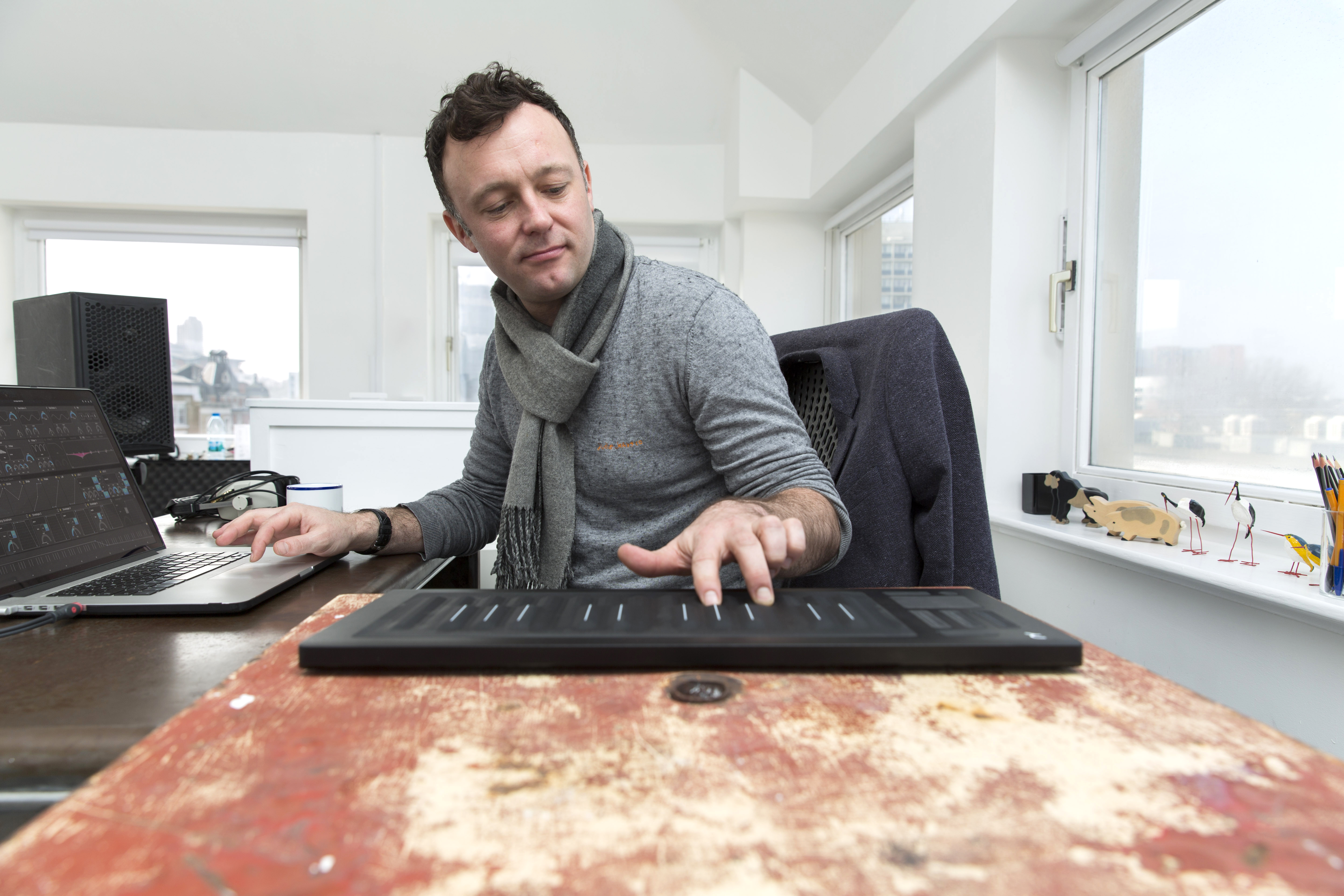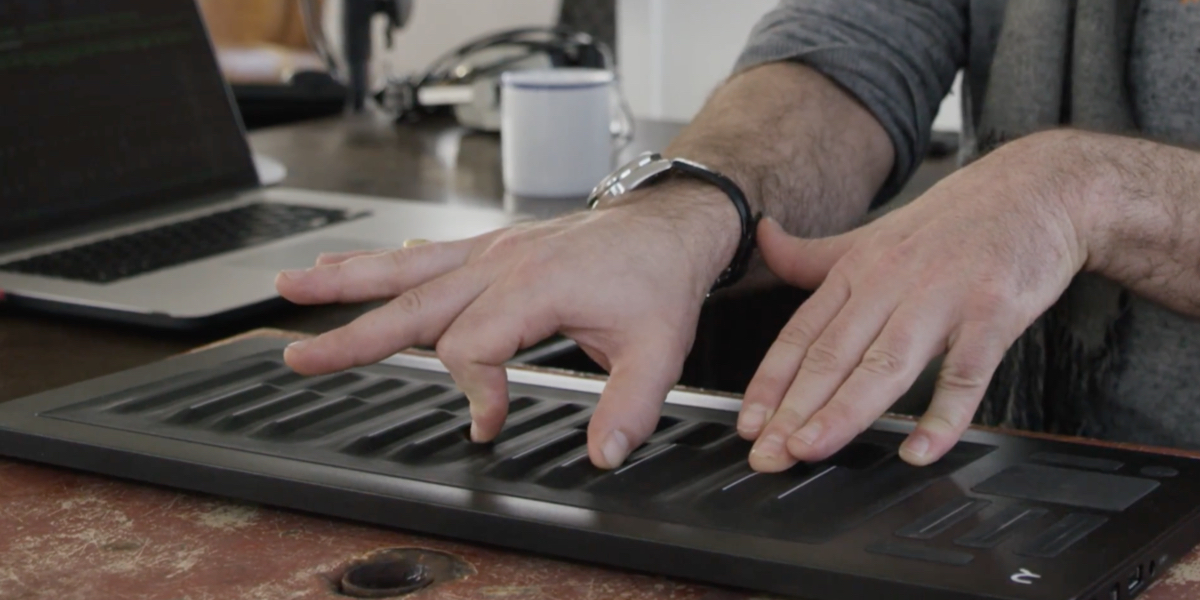On the RISE: Composing music that is out of this world
Vast cosmic forces were reduced to a “chirp” in 2016.
A team of astrophysicists isolated a sonic waveform that proved the existence of Einstein’s “gravitational waves,” the ripples through the universe caused by time-and-space-bending collisions of neutron stars and black holes. Like the elusive Higgs Boson particle that physicists are still searching for, the chirp of gravitational waves is something almost undetectably small that can prove something inconceivably large. The discovery was one of the greatest scientific breakthroughs of the twenty-first century.

A bright little crescendo, the chirp of is also the kind of sound that might be in the background of a piece by the band Penguin Cafe. Successor to the original Penguin Cafe Orchestra, the band has perfected a lively, eclectic, globo-folk sound: “music that you’re sure you’ve heard somewhere but have no idea where,” according to Arthur Jeffes, the group’s leader and the son of the Penguin Cafe Orchestra founder.
Fascinated by this sparrow chirp from the mouth of the universe, Arthur started composing music around it. “If someone doesn’t understand the science at all, the music is an alternative route into what’s wonderful about these sounds,” he said during a studio session in East London. “Doing this musically means that you can connect with it.”
Kilonova 2.0, for example, “explores the immediate afterglow following the birth of a black hole.” The percussion sounds are chopped-up gravitational waves, and even the piano part is informed by cosmic light curves. The chirp of gravitational waves is blended with piano and strings parts in another of Arthur’s compositions: Black Hole 5.0. The piano line in this track was created by MIDI-mapping the collision curve of a neutron star and black hole — and then quantizing it in a key that sounded musical.
Compositions like Kilonova 2.0 will form part of an immersive audiovisual performance about gravitational waves and exoplanets — two areas of astronomical research that have yielded the most exciting recent discoveries about the shape of the universe. Arthur has joined astrophysicist Samaya Nissanke, planet-hunter Jean-Michel Desert, and the creative group Marshmallow Laser Feast to produce the project. They aim to transport people to an environment that approaches an all-encompassing experience of space. Set in domes and planetariums, the work will blend massive visual projections with live and recorded music.
“If someone doesn’t understand the science at all, the music is an alternative route into what’s wonderful about these sounds“
“It’s all a little behind, because in the past year we’ve come out with two new albums for Penguin Cafe,” Arthur said. The band’s latest album, The Imperfect Sea, released in May 2017. But the audiovisual project about deep space is moving ahead with funding from the UK’s Arts Council. Arthur envisions performances in at least six locations from Mexico to Egypt to the UK.
He started working with a Seaboard RISE in 2015, shortly after the multidimensional MIDI controller was released. As he explored how to create music out out of gravitational waves the RISE became an important composition tool. From Gustav Holst’s The Planets suite to John Williams’ Star Wars theme to Stanley Kubrick’s repurposing of Strauss’s “Beautiful Blue Danube” for 2001: A Space Odyssey, strings and horns have helped convey the majesty of space. Arthur built up “enormous textures” of string and brass sounds with the RISE before interspersing them with gravitational wave chirps. These orchestral sections were later performed and recorded live by the City of Prague Orchestra.
It is the piano and string parts of compositions like Kilonova that transform sound into music, taking an alien sonic blip and meshing it in harmonies that tell us that this chirp is not only beautiful but also profound. “Orchestral strings make it more accessible,” Arthur says, and accessibility is the goal of his musico-scientific project. The project “takes something big and inhuman, and you chop it up and make it into music, and this really does humanize the universe.”


“It’s all a little behind, because in the past year we’ve come out with two new albums for Penguin Cafe,” Arthur said. The band’s latest album, The Imperfect Sea, released in May 2017. But the audiovisual project about deep space is moving ahead with funding from the UK’s Arts Council. Arthur envisions performances in at least six locations from Mexico to Egypt to the UK.
He started working with a Seaboard RISE in 2015, shortly after the multidimensional MIDI controller was released. As he explored how to create music out out of gravitational waves the RISE became an important composition tool. From Gustav Holst’s The Planets suite to John Williams’ Star Wars theme to Stanley Kubrick’s repurposing of Strauss’s “Beautiful Blue Danube” for 2001: A Space Odyssey, strings and horns have helped convey the majesty of space. Arthur built up “enormous textures” of string and brass sounds with the RISE before interspersing them with gravitational wave chirps. These orchestral sections were later performed and recorded live by the City of Prague Orchestra.
It is the piano and string parts of compositions like Kilonova that transform sound into music, taking an alien sonic blip and meshing it in harmonies that tell us that this chirp is not only beautiful but also profound. “Orchestral strings make it more accessible,” Arthur says, and accessibility is the goal of his musico-scientific project. The project “takes something big and inhuman, and you chop it up and make it into music, and this really does humanize the universe.”
Join the ROLI community